A recent sale elicited a good question and disinterred an old discussion. It may be useful to re-visit the topic for readers who may not have considered it much in recent years.
The sale concerned was a J. Blanch & Son side-lock ejector made in 1903. We know it was made then because the engraver, who way well have been the great Harry Kell, had engraved that date in Roman numerals on the trigger guard.
Adams once wrote that best guns cannot have through lumps
Toby Barclay, who knows more about Blanch that anyone else I can think of was certain that Blanch only had this engraved on his best guns. It is something of a badge of excellence, like the intertwined initials that F.T. Baker used to put on his best guns.
The question a customer asked was this: “Is the Blanch actually a best gun? Cyril Adams once wrote that best guns cannot have through lumps, which the Blanch has.”
More recently, while shooting with Purdey Chairman Dan Jago, he referred to all of Purdey’s current line-up as ‘best guns’. That, of course, covers the well-known and much-loved Beesley self-opener and the Woodward over & under Purdey has made since the 1940s. It also claims ‘best’ status for the more recently introduced trigger-plate over & under models.
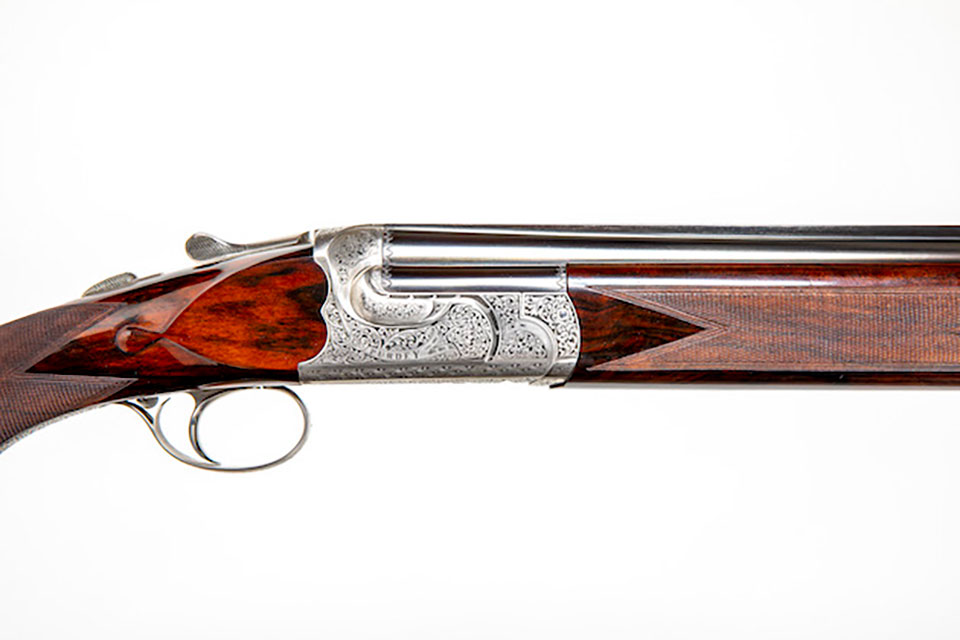
What then, is a ‘best’ gun in 2022? to answer the question, we have to examine some first principles and glance back into history.
The term ‘best’ gun in British gun-making traditionally referred to a bespoke gun made to the highest quality in every respect regardless of time or cost of manufacture. It necessitated tasking the best craftsmen of their kind to do their best work at every stage of the build.
Quality control was overseen by the gunmaker whose name adorned the lock plates and the rib. When John Robertson claimed one quality of work only; ‘the best’ to his customers at Boss & Co, he meant to cast an eye on manufacture that would allow for no compromise regarding quality of materials or workmanship.
‘Best’ guns have been a bench-mark for the quality demanded by the British aristocracy dating back to the days of Joseph Manton. Manton passed that mantle on to his proteges like Thomas Boss, James Purdey and Charles Lancaster. They in-turn spawned their own fledgeling gunmakers who went on to form their own firms: men like Frederick Beesley and Henry Atkin.
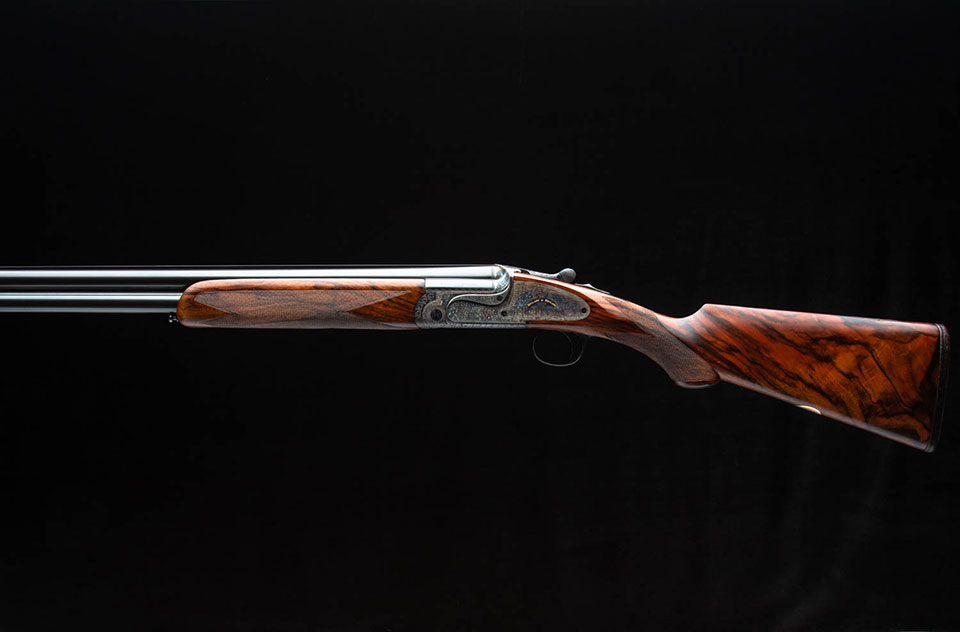
When Robertson touted Boss as ‘makers of best guns only’ he sold only side-lock and over & under models. There was a demand for less expensive boxlocks but he refused to put the name ‘Boss & Co’ on these; instead using ‘John Robertson’, with the Boss address on the rib.
Unlike Boss & Co in (and after) the Robertson era, Holland & Holland, Rigby and Purdey, like most other gunmakers, sold a range of models at a range of prices. Just because you have a Purdey, it does not mean you have a ‘best’ gun necessarily. It could be a ‘B’ grade.
If you have a Holland & Holland, it could be a ‘Badminton’ or a ‘Dominion’, neither are ‘best’ guns. A Rigby ‘D-Quality’ double rifle is by no means ‘best’. All these guns and rifles are very well made and mechanically excellent but they are not ‘best’.
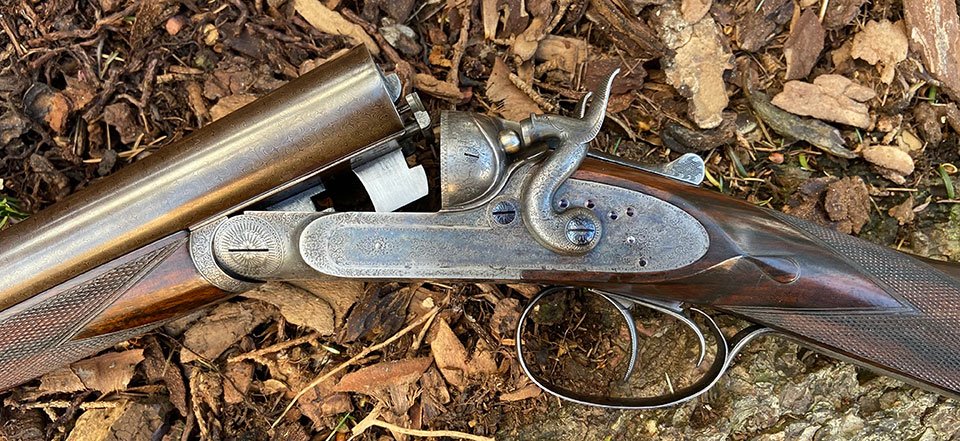
Therefore, we have established that simply bearing a famous name does not make a gun a ‘best’ gun. To claim so is historically and factually inaccurate.
I mentioned earlier that Robertson eschewed boxlocks from his ‘best’ inventory. Does that mean boxlocks cannot be best guns? Is a best gun only ever a side-lock or an over & under?
the ‘best’ gun concept was established well before hammerless guns
Again, history can tell us the answer. Best guns were certainly being made before 1875 (when the Anson & Deeley boxlock arrived) and to that point, before 1880 (when Purdey started building the Beesley self-opener). Therefore, the ‘best’ gun concept was established well before hammerless guns were the norm.
‘Best’ hammer guns undoubtedly exist, even ‘best’ muzzle-loaders, so why not any other mechanism?
Turning to Scotland for a minute, John Dickson and James MacNaughton in Edinburgh were very much orientated towards ‘best’ guns when they began producing the trigger-plate models upon which they built their modern fame. MacNaughton’s ‘Edinburgh’ gun and Dickson’s ‘round action’ are invariably of ‘best’ quality.
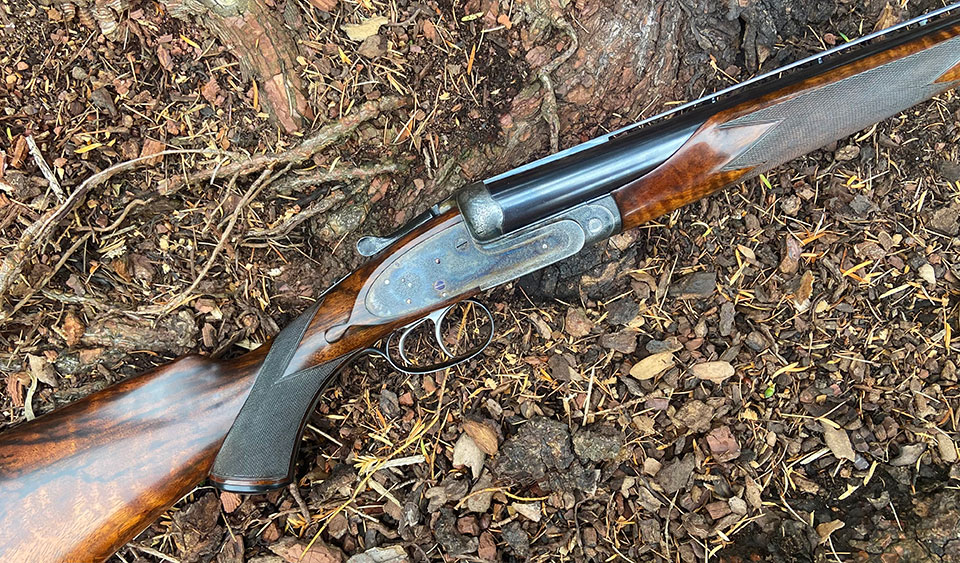
As for boxlocks, W.W. Greener considered his version of the principle (the 1880 Facile Princeps) superior to the best side-locks of the day. A Greener ‘G-gun’ is qualitatively every bit the ‘best’ gun that a Holland & Holland ‘Royal’ is.
We can, therefore, now assert that action type is not a measure of a ‘best’ gun. We have historical examples of ‘best’ percussion guns, ‘best’ hammer breech-loaders, ‘best’ boxlocks and ‘best’ trigger plate guns.
As for niceties regarding details, we can certainly make a case for the evolution of a best gun gravitating towards certain practices. These became conventions and then led to the kid of assertion attributed to Cyril Adams ‘best guns do not have through lumps’ and another, often -heard, claim that ‘best side-locks are stocked to the fences’.
I believe these claims stem from practices that were actually adopted so may have been useful guides to new guns, built within a particular time window. However, they do not apply to guns made earlier, before the stylistic convention became established.
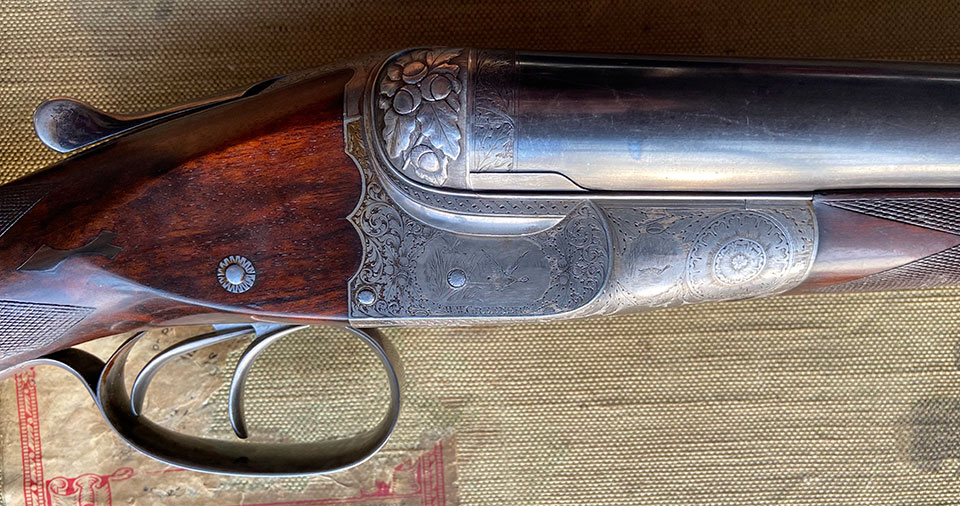
For evidence, we can return to Boss. Well after Boss claimed to make ‘best guns only’ the firm delivered side-locks with shouldered actions (not ‘stocked to the fences’ in the style of a Purdey). The same observation can be made of the first model Holland & Holland ‘Royal’, which not only had a shouldered action but dipped-edge lock-plates as well.
I think these examples de-bunk the claim that to be ‘best’ a gun has to stick to a set of stylistic criteria applied as if they were universal. They were, in fact, very time specific. What we can observe as a convention applied to the ‘best’ guns of 1935 we cannot demand of those made in 1910.
We have concentrated so far on what features are unreliable indicators of what ‘best’ guns are not. They are not, however ,necessarily bad clues for which to look. Best hammer guns usually do not have through lumps, best side-locks of the post WW1 era do not usually have shouldered actions and most boxlocks are not ‘best’ guns. So, there is some truth in these claims but the devil, as always, is in the detail.
To be a ‘best’ gun, each and every stage of production has to be of the highest standard. That applies to workmanship and materials. If it is not the work of the best craftsmen in their discipline available at the time, it probably won’t be a best gun. If it is made from materials that were not the best then available, it probably won’t be a ‘best’ gun.
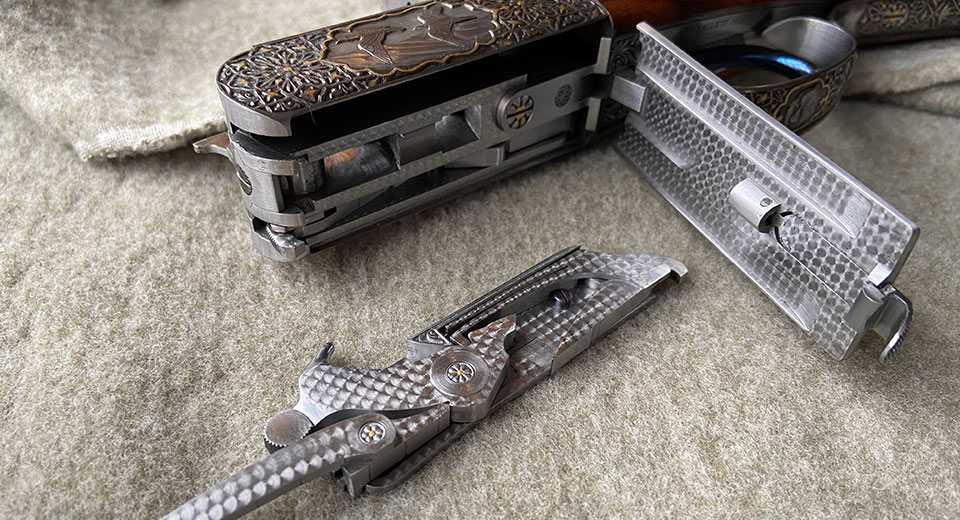
This observation precludes from the ‘best’ category exercises in ‘turd-polishing’. By that, I mean starting a gun with inferior parts and materials and striving to disguise the fact by over-working them. We saw numerous examples in the 1970s and 1980s with British firms buying Spanish barrelled actions and stocking, engraving and finishing them in the UK. They will never be ‘best’ guns because they started life with a compromise to save costs.
This is also where high-grade pre-WW1 American side-by-sides fall down. Though they were often highly embellished externally, with beautiful chequer panels and gold-inlay, internally they were at the level of a mid-grade Birmingham boxlock, at best.
While some pre-WW2 London side-locks are made to ‘best’ standards throughout but stocked with plainer wood and engraved to a lesser extent, thereby being considered second quality, embellishment is not the best arbiter of quality.
Many profusely engraved guns lack the integral quality of their less ostentatious ‘best’ brothers, when closely inspected. Nor does ‘best’ mean that the degree of embellishment cannot be higher.
Many gunmakers produced a ‘best’ gun for their shooting customers but created even more expensive ‘exhibition’ or ‘presentation’ grade guns for those purposes. These started with a ‘best gun and embellished it with very elaborate carving or precious metal inlay, extravagantly figured walnut stocks and other levels of ‘bling’ that went beyond what would be demanded in the ultimate hand-made expression of the best gunmakers could produce for sporting purposes.
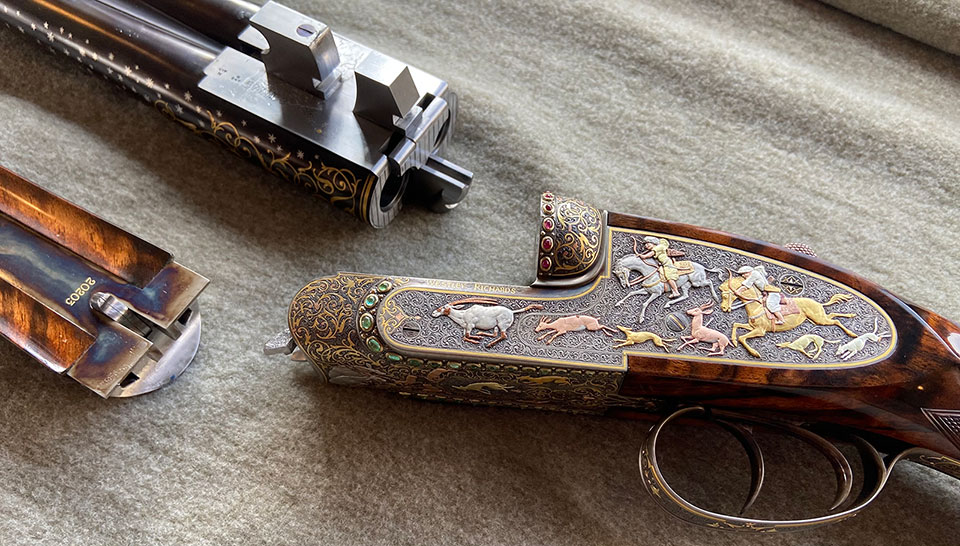
The higher finish guns might compromise practicality for beauty, such as wood so well figured it lacked the strength of that which would be fitted to a ‘best’ gun intended for heavy use in the coverts. If embellishment with precious metals and gem stones created a gun or rifle that was impractical due to the risk of damage, it went beyond the concept of ‘best’ into another realm. ‘Best’ guns had also to be very fit for purpose.
For some, the amount of machine work involved in making a gun is a factor in the claim it can make to being ‘best’ quality. A modern Fabbri, for example, is made with very little traditional bench work by gunmakers. It is more expensive than most, if not all, Britain’s offerings from our most famous houses. Is a Fabbri a ‘best’ gun?
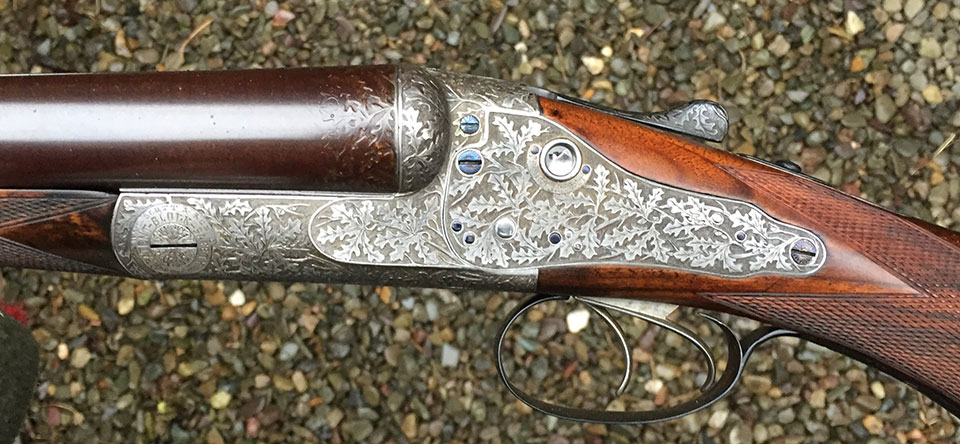
Gunmakers have always used machines. Lathes, mills, treddle-power, steam-power, electric power, whatever made the work easier and faster. Today, we just have more sophisticated machinery. CAD-CAM and CNC programmes create parts far closer to the final fit than forging and milling ever did.
‘best’ it is undeniably present but it cannot be measured
So, it would be unfair to demand that to be a ‘best’ gun, no machines are allowed in the production process. It has never been so.
Conversely, is a perfect machine-made kit of parts, assembled by hand a ‘best’ gun? Will we one day be asking if a ‘best gun’ can be a 3-D printed creation? There must be some limit, surely?
What we are seeing in the modern era is the blurring of those limits.
A recent shooting friend told me “I have had Fabbris and they are beautiful but they have no soul”. Soul, whatever that is, is built into a gun by the hands of the craftsmen who build it. Beauty is not objective perfection, but subjective artistry. In guns, it is a blend of artistry and engineering.
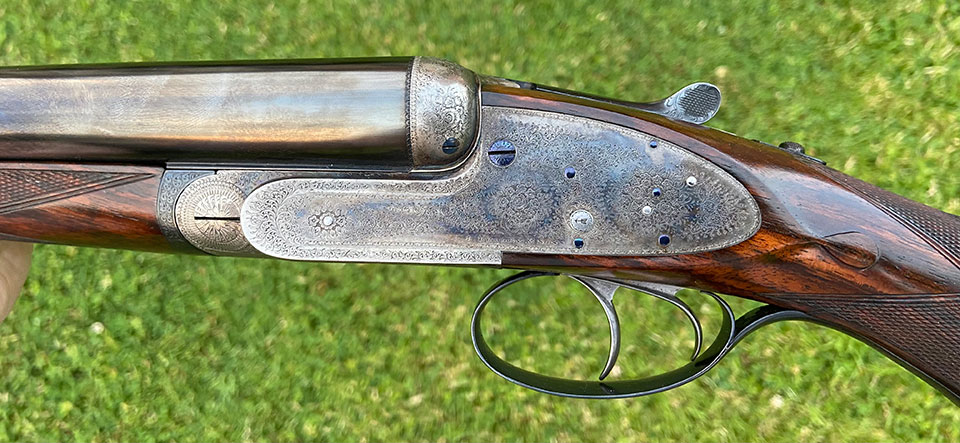
The life and beauty inherent in a ’best’ gun is hard to decipher. In the truly ‘best’ it is undeniably present but it cannot be measured. Machines cannot impart that.
We are very close to a time in which machines can spit out every part necessary to build a traditional London gun so accurately that with a simple assembly process, you will have a fully working example of a 19th century masterpiece. Laser engraving, laser chequering and synthetic finishing will, perhaps, one day soon, be the equal of the work any craftsman can deliver. But these will not be ‘best’ guns. They will be facsimilies of best guns.
A sculptor’s original work will always have something that even the best cast of it won’t. So it is with best guns. A gun built by the hands of men; very skilled men, working to the best of their abilities with the finest materials, thereby creating a work of art that functions perfectly, comes to life in the hands of its wielder and develops more character as it ages: that is a best gun.
Now, try and convince me otherwise.
Published by Vintage Guns Ltd on (modified )




